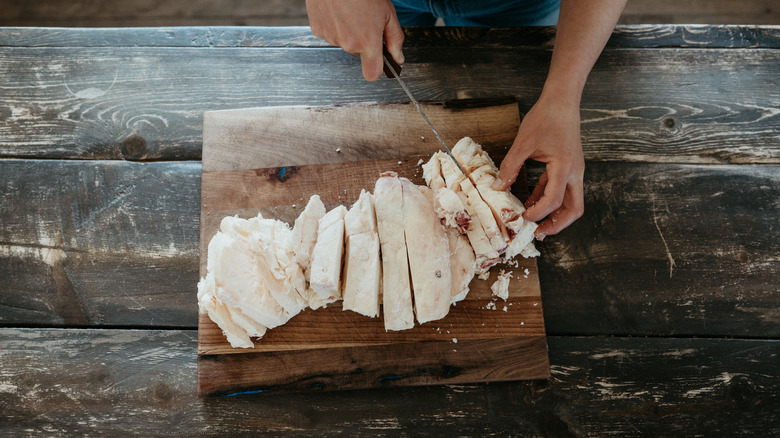The Mess-Free Way To Make Your Own Beef Tallow
You may have noticed that beef tallow is having a moment — and for good reason. It's a powerhouse in the kitchen. Also known as "beef drippings," beef tallow is rendered beef fat that's made by simmering and clarifying suet, or the fatty tissue that surrounds the animal's organs. In addition to having a deliciously savory kick, the key difference between cooking with beef tallow and seed oils (such as olive or canola oil) or butter is that beef tallow has a higher smoke point, making it ideal for cooking that requires high heat, like searing, frying, and roasting. However, anyone who's ever tried making beef tallow at home understands how time-consuming and finicky the process can be. To get some tips, Food Republic spoke to Lindsey Chastain, founder of The Waddle and Cluck.
When asked what the cleanest and most efficient method is for rendering beef tallow at home, Chastain said, "Dry rendering is pretty popular, but every time I have tried that method, it burns." For this reason, she said she prefers to use her slow cooker to make beef tallow from scratch.
To get the process started, Chastain suggested chopping up the beef into small pieces and then using a food processor on the pulse setting to break down the meat before adding it to the slow cooker. "Add just enough water to cover the fat. Set it on low for [six to eight] hours," she explained. Then, simply wait for the beef fat to turn brown and crispy. That's when you know it's entirely rendered.
How to store your homemade beef tallow
While you might be anxious to use your homemade beef tallow right away, for example, as a butter alternative to make a perfectly crispy savoury pie crust, you must store it properly. Chastain also has advice on how to store beef tallow like a pro. She noted that once the fat is fully rendered, "strain the solids through cheesecloth into a mason jar. Remove anything that looks burned. Let it cool to room temperature with the lid off." After the beef tallow has cooled, replace the lid.
Once you've gone through this process, the nice thing about beef tallow (besides the fact that it works wonders for seasoning cast pans) is that, according to Chastrain, you can keep it in a mason jar in the fridge for up to three months. She said, "You can also store it in the freezer for a life of [12 to 18] months."
Not sure how much beef tallow you'll need for each cooking or seasoning session? A little beef tallow goes a long way, and Chastain has a genius hack for this. She said, "I portion into ice cube trays[,] so I can thaw just the portions that I want to use." Similar to freezing smaller portions of butter to use in specific recipes, this cheat code is perfect for those of us who want to reduce waste while having beef tallow at our fingertips.


